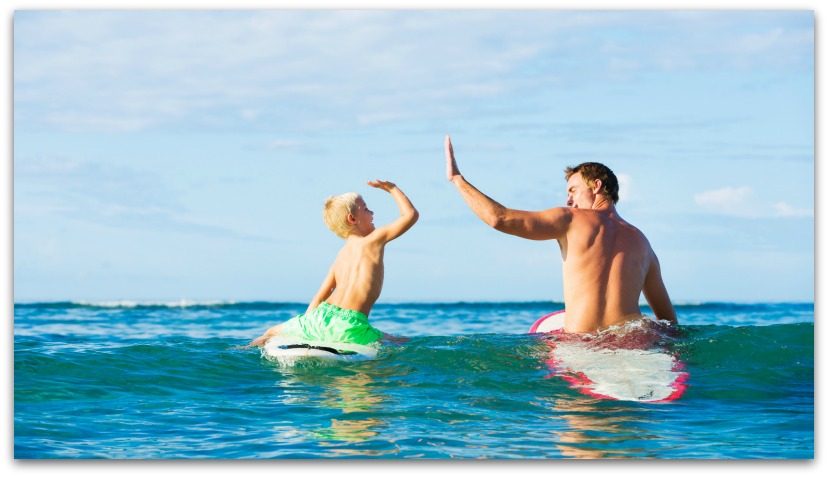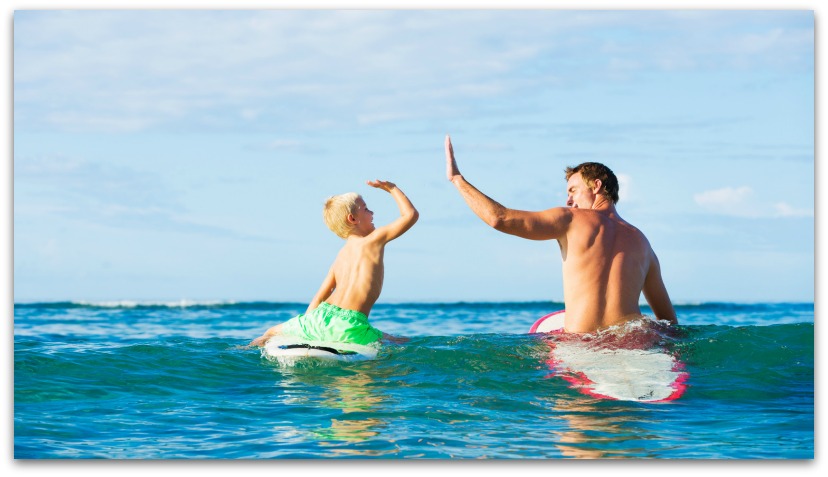Here’s how surfers do it, dude.
Catch a Wave
When a surfer rides a wave toward shore, it may look as though the board and rider are being propelled by the rushing water. But they’re not. In fact, the act of surfing is more like riding a skateboard down a hill. The difference is that a surfer is sliding down the face of a hill made of water.
An ocean wave moves through water that stays relatively still. Think of a gull floating in the ocean. When a wave comes along, the gull floats up to the top and then back down without being carried along with it. Waves don’t carry water—or anything else—with them until they break on the beach.
When a wave breaks, it’s because it has run into land. Half of a wave is above the water’s surface and the other half is below. As the wave approaches the beach, it moves into shallower water. The bottom of the wave slows down when it begins to run into the ocean floor, but the top keeps going just as fast. As the top of the wave outpaces the bottom, the moving hill of water gets steeper until it breaks into white water and falls in front of itself with incredible weight and force. It’s as the wave stands up and gets ready to break that a surfer wants to begin sliding down its face.
Get on Board
- Surf boards come in all shapes and sizes, but are divided into two broad categories: Long boards and short boards.
- Long boards generally range from 9 to 12 feet long. Because of their greater size and mass, they offer more stability but are not as maneuverable as short boards. Beginning surfers usually start with long boards and move up to smaller boards as their skills improve.
- Why is there a fin on the bottom of a surfboard? It provides stability and prevents the board from sliding sideways.










